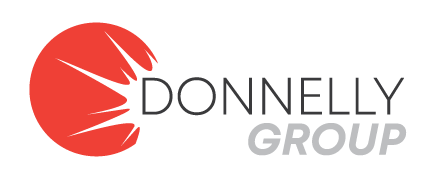We often talk about our front-line workers and C-suite leaders, but how are we protecting our middle managers?
We ask a lot of our middle leaders. In one day, they might moonlight as a meeting facilitator, therapist, coach, operations manager, role model, talent developer, or metrics reporter. Mixed together repeatedly, it’s a no-fail recipe for burnout.
Team leads, supervisors, and managers are the critical link in communicating organizational needs to their teams. Their success in this role impacts how your front-line employees experience their work environment and how your customers interact with and rate your business.
Yet, many managers lack training and resources to do their jobs—and industry data suggests they’re ready to quit, arguing that even if they haven’t resigned physically, they’ve likely resigned mentally.
A recent Humu study found that managers are burdened by staff retention, hiring, and team performance. Not only is it harder to juggle all their jobs have become (a special shoutout to shifting post-COVID priorities and the “Great Resignation” trend sweeping the nation for this!), they feel ill-equipped to adapt to workforce changes and do their job well.
Heck, Gallup warned of this back in 2019, predicting that overwhelmed, stressed, and distraught managers would severely affect organizational abilities to guide their teams through a new work era.

These recent findings tell us quite plainly that burnt-out middle leaders need help driving performance before it’s too late. It’s a daunting thought, really, that businesses might have forgotten such a vital piece of the workplace puzzle. But the Donnelly Group remains focused on the positive—in every roadblock, we believe there is a silver lining. You see, such a gap in leadership structure means there’s an even bigger opportunity for leaders to truly invest in their people.
When mid-level managers are given the support they need, they can provide that same support in return. The result? A happier, more engaged workforce overall.
Day in and day out, leaders must prioritize middle management if they want their organization to adapt to post-COVID and the Great Resignation. (Actually, helping leaders adapt to a new workforce by accessing evergreen coaching strategies is the main reason why we launched our subscription service on Patreon.)
Remember, managers can't set others up for success if they aren't set up for success first. Alleviate sources of stress for your managers and empower them to focus on people. To do this, take it back to the fundamental principles of people management.
- Listen: What do they need? How are they feeling? In the same way you expect managers to “check in” on their front-line workers, leaders must “check in” on their managers. Encourage them to provide honest feedback regarding their workload and responsibilities. If they don’t have the resources they need, ask them what will help them lead their people successfully.
- Connect leaders and managers regularly: Middle managers crave guidance, actionable steps, and real-life solutions for shaping a culture of service with employees, customers, and coworkers. Connect with your managers regularly. Act as a mentor and reserve time for them to ask questions, connect dots, and strategize next steps together.
- Coach and equip: More than an entry-level employee but not yet a senior leader, middle managers need time to develop skills outside their current role. Promoting or hiring a new manager is only the beginning. Leaders must provide regular professional development and coaching workshops to teach their managers how to drive change and support teams successfully.
The eyes and the ears, mid-level workers connect senior leadership to front-line employees—they’re one of the few in an organization that lead and follow. When we focus on this group, we empower them to support employees, motivate their teams, and communicate the organization’s strategy and vision.
Training and development should never end. This is true for people at every level of your organization, but especially true for middle management. Leading people is hard, but it’s become even harder given all that’s taken place over the last few years. When managers lead with a vision and a purpose, they help inspire, motivate, and boost employee satisfaction.
So, how will you invest in your people? At every level?
Start by committing time and resources to fundamental training and development. Then, add recurring workshops to your leadership playbook to raise ‘em up and unlock potential. When you teach people how to lead, not manage, you create a stronger, more adaptable workforce.
We’re continuing the conversation over on Patreon. Join us, why don’t you?

Want to be more EFFECTIVE? Follow us on the journey:
- Join us on PATREON: https://www.patreon.com/DonnellyGroup
- Follow us on TWITTER: @DonnellyEffect
- Follow us on LINKEDIN: Donnelly Effect & Mike Donnelly
- SPARKS! Blog: Subscribe on the upper right hand side of this page =)
Mike Donnelly is a recognized expert, keynote speaker, facilitator and consultant in customer service and leadership development. Leveraging 20+ years of experience from The Walt Disney Company, he and his team help destination location clients and clients in various customer-facing industries create customer loyalty to achieve positive business results. Learn more at www.DonnellyEffect.com.



